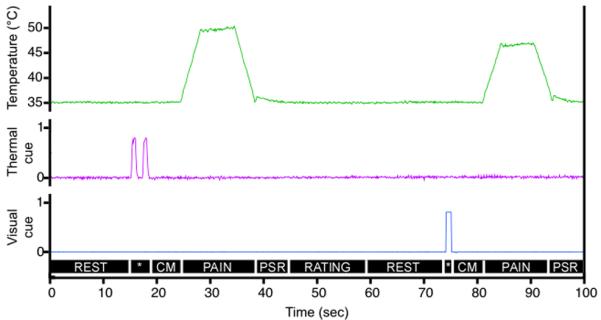Figure 1.

The temporal sequence of the task. Each noxious stimulus was preceded by a sensory cue (cue-presentation period, *) in either the visual (one or two white squares) or thermal (one or two 43°C pulses on the forearm) modality that informed subjects whether the upcoming stimulus would be of low or high intensity. The delivery of these cues was completed 6 s before noxious stimulation (cue-maintenance period, CM). Noxious stimuli were of two intensities – low (47°C) and high (50°C) and were 6 s in duration at the destination temperature (PAIN). There was a 6 s post-stimulus rest (PSR), and then subjects were allowed up to 14 s for stimulus intensity rating (RATING). Finally, there was a 15 s rest period (REST) before presentation of the next cue. Each functional imaging series involved the presentation of four such cue-stimulus-rating blocks.
